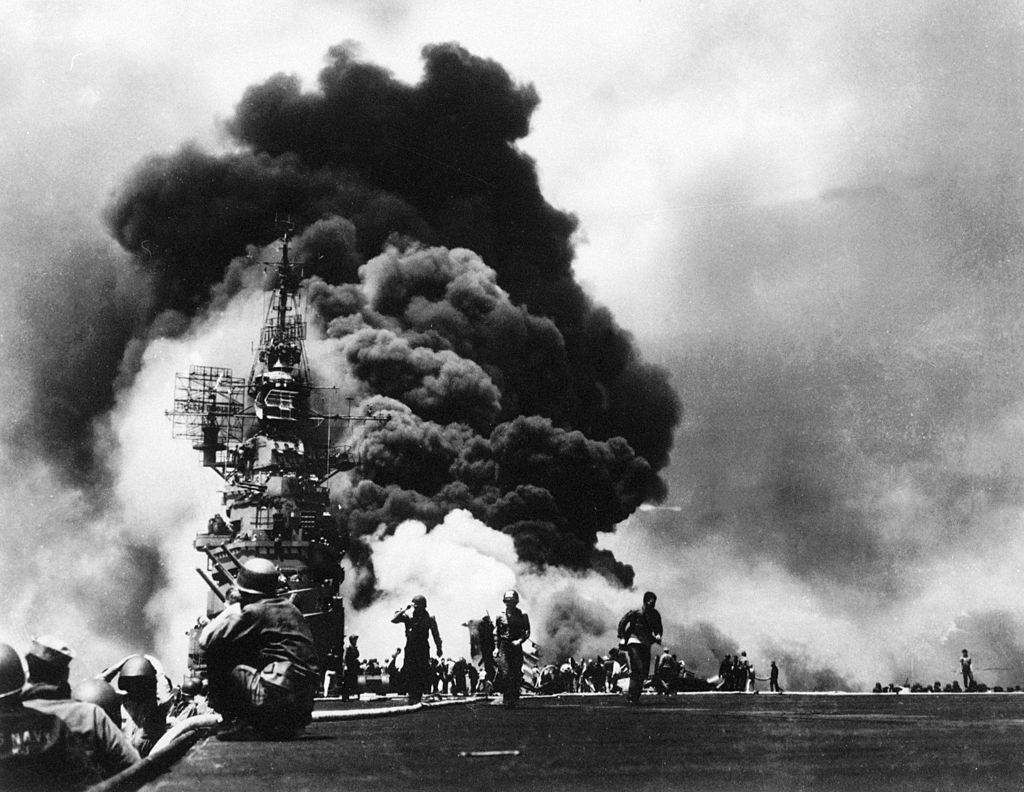Hmm seems like all his examples he gives are where you take a fleet and you bring it into direct range of land based air and through submarine choke points. I would hardly say that makes surface vessels obsolete. It makes them vulnerable against land based airpower and in seas where submarines have free reign.
Surface fleets aren't necessarily obsolete, but they are definitely more vulnerable today because they can no longer hide in the vastness of the oceans.
Are concepts like sea denial and sea control, area denial, air supremacy out of favor?
No but each concept has its counter. The days of unfettered western (read US) air supremacy are over and that's something that people will have to get used to. Sea control is a relative term and nowadays would be both a spatial and temporal (time) specific term. This means that a force will have sea control over a specific area for a specified period of time. Usually the area in which it is conducting operations for the period that it is conducting them as long as they
are able to suppress enemy maritime and air activity within in the area of operations. A2AD is very much in favour and it is an area that the USMC are actively entering. It is also a cornerstone of PLA strategy that involves the PLA-RF, PLAN, PLANAF and PLAAF. It is also something that the ADF should be actively considering.
Yes, I would expect an under strength fleet to take heavy losses if it sailed to 100km of the Chinese coast in the middle of a high intensity war. This is stupid.
100km???? Try 1,000nm.
But out of the range of land based air power, away from choke points, are surface fleets still irrelevant? What about merchant shipping? Are they are supposed to die? or are we air freighting everything now? Or are we building merchant submarines? How do you defend from air threats at sea with just submarines?
Operation Pedestal was effective because it enabled them to resupply their land bases, while at tremendous cost. I don't get how the message out of that story is surface fleets are obsolete. Surely the moral is harden and deepen your remote bases, ensure you can protect your logistics supply, don't be out flanked and not have to run hail mary missions in the first place
Operation Pedestal was about the absolute imperative resupply of Malta and although a tactical loss it was a strategic success because of the arrival into port of the tanker Ohio with 12,000 tons of fuel. If the five ships hadn't reached Malta it would've have resulted in Malta's surrender. If that happened, Rommel and his Afrika Korp may well have eventually reached the Suez Canal because their logistics wouldn't have been so thoroughly interdicted at sea.
The moral out of Falklands is a surface fleet is obsolete? I may need to brush up, but the British won that one. Again bringing ships in range of enemy airpower while they exert even air parity involves losses. But surface fleets obsolete? If the British had proper carriers, designed for such missions, as they had previously its doubtful the Argentinians would have even tried in the first place. Even a little light carrier power was extremely effective in that conflict.
Yes, the British won the Falklands War, but I argue more by luck than by good management. For three reasons: they didn't have the AEW assets for fleet protection, they were lucky that the Argentinian surface fleet wasn't spoiling for a fight. If the latter was true they would've been in trouble although I believe the Argentinian carrier may have only got one strike off before it was sunk by one of the SSNs in the area; and they lacked intelligence about the Argentinians intentions. If one or both of the RN Invincible Class CVs had been severely damaged or sunk it's would've severely curtailed the air operation and if both had been put out of action, it would have been all over rover.
I certainly get the concern about magazine depth and 12 frigates being enough. Its not enough IMO, particularly if we want to move to more effective longer range hypersonic missiles that would see our Hunter class sail with only 16 missiles. But claiming surface fleets are irrelevant is wrong.
Also more missiles is also wrong. You want more better missiles. You want the longest range, fastest and most effective missiles, not just a barrage of dumb short range rockets.
Nobody said anything about dumb short range missiles. More missiles in an attack on a surface naval fleet is exactly the answer and the more the better. The defenders have to target every incoming missile and they can't really pick and choose that much. Each missile at the end of the day is going to hurt. So the more missiles that you launch the greater the probability that some will get through to the targets. At the same time the defenders will be expending SAMs at a great rate of knots and these are missiles that cannot be replenished at sea. So once the launchers are empty, they are sitting ducks.
At the end of the day, this comes back to the old naval conundrum of more armour or more and bigger guns. It's the same kind of argument. 80 years ago the battleship was still believed by many to be the the capital ship that ruled the seas and the deadliest ship afloat, but already the aircraft carrier was supplanting it in that role. Nowadays the CV / CVN has in turn been supplanted by the SSBN. One of the few constants in nature is that there will always be change and the same happens in maritime strategy. It's always evolving; it's never static.[/quote]



